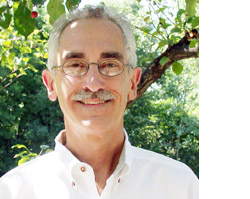
KC: You walked in the door at EV in 1963, and here we are now, 40-plus years later. What’s the biggest change you’ve seen?
JL: I’m not much of a philosopher. I don’t think the basic way we do business has changed. You need to identify problems that need to be solved and provide solutions, and in the process, build very close relationships with the people who make decisions.
Some of the technology has changed, but mostly in the electronics area. The basics of transducers, design wise, were established long before I was born, which was 1941. Sorry, that’s not a very snappy answer, but I believe the core of what we do has remained essentially the same.
KC: What are the most significant products and technologies from EV?
JL: Well, let’s start with EV’s Variable-D directional microphone technology, which eliminated the up-close bass boost of conventional directional mics that “muddies” the voice and reduces intelligibility.
This effect is cool for entertainers but is not what you want for the spoken word. There was a time when mics like the EV RE15 and its less expensive brethren were the podium mics of choice, for this reason.
It’s an interesting comment on the industry that the RE15 family is no longer in that premier position, even though we still make one of these mic models. Now you see little condenser mics on podiums, and you get right up on them and they sound “bassy,” with plenty of P-pops. These days people just put up with this, sort of exchanging form for function. It’s like they no longer know how to do it correctly.
Product development is an interesting game, in that you can develop a product for a focused application and that may be where it’s used. An example would be the CD high-frequency horns, which marry several little principles to work extremely well.
On the other hand, I remember the first order of RE20 mics. We had to get 20 of them out to Glen Glenn Sound in Hollywood by a certain day in 1968. Even engraved their name on the mic bodies – it was a big deal. Film sound and production was the expressed primary application of this mic, so it makes sense that Glen Glenn was the first major customer.
But now what’s an RE20 used for? Kick drum, voiceover and radio broadcast. It’s an indication that as hard as Lou Burroughs (Al Kahn’s partner in EV’s predecessor, Radio Engineers, and EV’s “Mr. Microphone”) tried, doing the homework and building the relationships, the product took on a life of its own.

Manifold Technology was a milestone; the idea of combining two to four drivers on one horn with minimum degradation of sound is pretty neat. It got EV into the concert sound business.
Then we went to the X-Array systems with [and] Ring Mode Decoupling (RMD), an intensive way of looking for and suppressing the many acoustic and mechanical delayed resonances that color the sound – particularly vocal sound – of loudspeakers.

